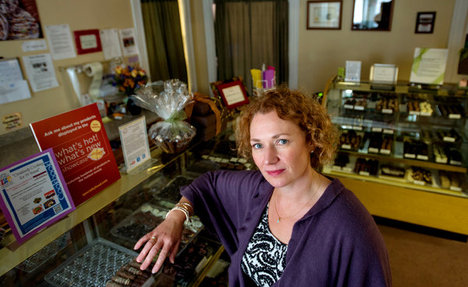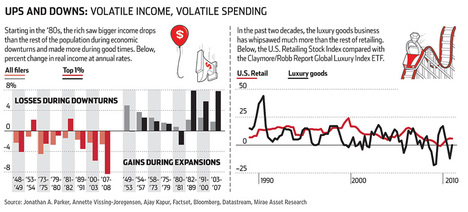(p. B4) . . . , Charlene Conway is watching her numbers. For 22 years, Ms. Conway and her husband have run Carousel Family Fun Centers in Fairhaven and Whitman, Mass. The business has annual revenue of less than $500,000 and depends exclusively on part-time minimum-wage earners, mostly teenagers, to handle tasks like running the snack bar and maintaining the games.
This year, Massachusetts is considering raising its minimum to $9 an hour, from $8. Should that happen, Ms. Conway said, she will probably need to reduce her staff of 20. Her employees currently make an average of $9 an hour, with managers earning from $10 to $15. Like Ms. Riley, Ms. Conway said that an increase in the minimum would force her to raise pay across the board.
And she, too, is reluctant to raise prices again. In 2011 and 2012, she increased her admission fees by a dollar — they generally run from $5 to $10 now, based on age and time of day. Another increase, she said, would just make things worse: “We will price ourselves out of business.”
In the past, when Massachusetts increased the state’s minimum, Ms. Conway responded by increasing the minimum age of her workers to 16 from 14. “I’m not going to pay a 14-year-old $9 an hour with no experience, maturity or work ethic,” she said. More recently, she has been hiring 18-year-olds with college experience. “What this does,” she said, “is eliminate the opportunity for young people to get started in the work force.”
Should minimum wage reach $10 an hour, Ms. Conway said she would reduce her staff to 10 employees and double up on work tasks. “This is a slippery slope that could absolutely cause me to shut down and force me into bankruptcy,” she said.
For the full commentary, see:
STACY PERMAN. “SMALL BUSINESS; As Minimum Wages Rise, Businesses Grapple With Consequences.” The New York Times (Thurs., Feb. 6, 2014): B4.
(Note: ellipsis added.)
(Note: the online version of the commentary has the date FEB. 5, 2014.)







